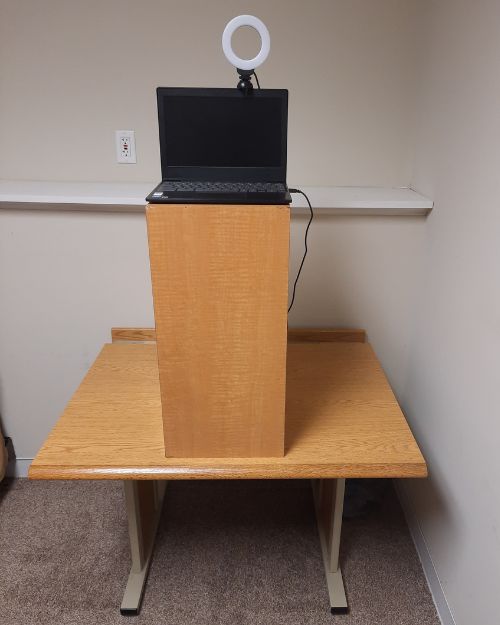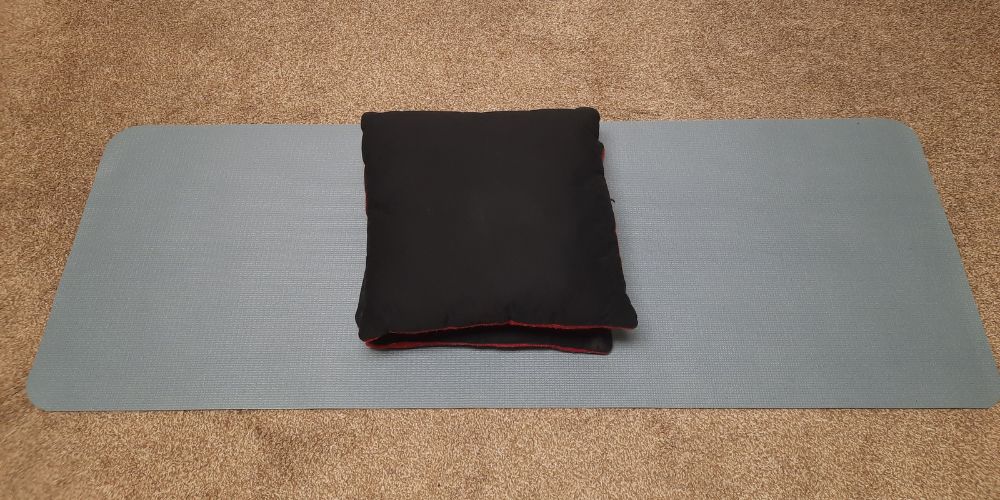
Meet Cedric — Online English Teacher
In this article, we’ve had a chat with teacher Cedric, who has shared what life as an online English teacher can look like, along with his best tips on how to build a career teaching English online.
Hi everyone! I’m Cedric, and I’ve been a teacher for over 13 years. I can definitely say it has been a rewarding experience. That is not to say there aren’t any challenges. There are, especially in the beginning. But teaching is one of the few jobs that exist where, if you do it correctly, you can have fun and enjoy yourself while you’re working!
In the past, I’ve done everything from teaching English and Math to elementary school students to being a lecturer at a university. But now I’ve settled into online teaching.
Overall, online teaching has been a very satisfying experience. One that I would like to share with you now. So if you’re interested, continue reading!
Pursuing a new career path
I decided to pursue online teaching for several reasons. The first is because of how convenient it is. When you don’t have to commute to work, it does make a difference in your life, and you end up with more time on your hands to do what you want. Because I’m self-employed, I can make my own schedule. I don’t have a boss telling me when I can work. I can even work on the weekend if I want to. More on that later.
But my favorite reason for going online is because now I teach English as a Second Language (ESL) to students from many different countries. I love this because, even when I’m working, I’m also always learning something new about different countries, cultures, and languages. As of right now most of my students are from Japan, but I’ve also taught students from Africa, the Middle East, South America, and Europe.

Sometimes it’s necessary to translate some vocabulary from their foreign language.
Starting the work day
As I mentioned earlier, most of my students are from Japan as well as other Asian countries like South Korea, China, and Taiwan. During the week, the most suitable time for them to have a lesson is in the evening. But the evening in an Asian country is the morning in the United States, where I’m from. Keep this in mind when deciding what students you want to teach.
I have two blocks of time in which I teach. My first block is in the morning. I wake up at 7 a.m. and begin classes at 7:30 (no commute, remember?) From then, I teach until 2 p.m., giving myself a half-hour break after I’ve taught for about two hours.
💡Cedric’s pro tip: It’s very important to give yourself a break or two throughout the day. Teacher burnout is real, and it is very difficult to conduct a good lesson when you’re tired. You always want to be at your best. This is beneficial to both you and the student.
Before classes start, I fix myself a tall glass of orange juice to help me wake up (I prefer OJ to coffee). I test my internet speed (very important), and make sure my webcam and audio are functioning normally.
Usually my “lessons” consist of only free-flow conversation. Many of my students have jobs that require them to speak English at least some of the time, so I focus on getting them comfortable speaking and building their confidence.
Keep in mind that a real part of teaching is providing encouragement to the students and motivating them to continue learning.
Teaching time
The lesson usually starts with getting caught up with the student. Usually, I’ll ask them how their week or weekend was, and they tell me about how their job was, what activities they did during their free time, or how their families are doing.
When I have a new student from another country, I always try to first greet them in their native language if I know how to do so. This might be the single most effective way to gain rapport with international students. When you say hello to them in their mother tongue, it immediately diffuses any tension that might have been there in the beginning.
The best part is that, usually, the student will smile and either thank you for speaking their language or ask you where you learned to speak it. Afterwards, many times students usually want to have a free flow conversation, but other times they want to read a news article with me about something interesting that they discovered. I help them out with pronouncing words correctly and defining vocabulary that they don’t know.
If they had a specific topic that they wanted to discuss, I would prepare a few questions before class about that topic.
Get your training and qualification
It’s worth noting that, when I started online teaching, I’d already had 9 years of real world teaching experience under my belt. For those of you who think you would like to try having students online, but haven’t taught a class before, I recommend participating in a teacher training program.
For one thing, a training program can teach you how to connect with students. A significant part of successful teaching is being able to conduct a lesson in a way that is interesting, meaningful, and motivating to the student. This comes with experience, so a training program can definitely help with it.
This type of program can also help with understanding cultural differences. When teaching international students, it is VERY important to be aware of customs and practices that are unique to each country and to approach them in a polite and respectful way. This will make your classes much more enjoyable for yourself and your students.
Want to launch an online teaching career just like Cedric? Get TESOL/TEFL certified:
To teach English online and overseas, you’ll need an accredited and recognized TESOL/TEFL certificate.
With World TESOL Academy’s accredited 120-hour TESOL/TEFL course, you’ll develop the essential skills and certification needed to get started.
Or click here to get a free preview of the course.
.
Overcoming challenges
As with any job, there will also be some challenges and pitfalls when it comes to online teaching. Perhaps the biggest one is the stability of your internet connection. Bottom line, if you lose your connection for any reason, you can’t teach or earn money.
Therefore, when choosing your internet service provider, make sure they are reliable.
Another good idea is to make sure you have mobile data for your cell phone service. This can be used as a backup in case you lose your primary internet connection.
One more important thing that I do is alternate between sitting and standing. I have created a makeshift standing desk using furniture around my house, but you can buy a cheap, decent one on Amazon. I try to stand up at least for 30 minutes during a work day.
If you don’t have a standing desk, I recommend at least taking a couple of minutes to get out of your chair and walk around so that your body doesn’t get stiff.
Then there are the students themselves. In my experience, nearly all of the students will be respectful as long as you are too. Of course, now and then you’ll meet the student that makes the lesson difficult; even if you’re respectful, there’s not much you can do about this.
But if there’s one thing that translates well across cultures, it is giving respect to others. Try to stay off your smartphone during the lesson. Do your best to be patient with the students. Many of them need time to formulate their sentences, and students can surprise you with what they can come up with after being given adequate time.

Another great way to gain rapport is to share common interests, like LoTR.
Finally, and this can’t be stressed enough, be absolutely sure to listen. Take in what the student is saying and repeat back to them what they told you to make sure you understand. I’ve heard stories from students about teachers that only smile and nod during a lesson. Don’t let that be you! The ability to listen to others is a skill that everyone appreciates.
Balancing work and self-care
As I said before, because I am self-employed, I can make my own schedule. Because many of my students prefer to have lessons on the weekend, I’m usually working on Saturday and Sunday. I usually take off work Monday and Tuesday, and this is great because I can complete my errands while everyone else is at work!
At the same time, one of the challenges of working from home is that you are alone most of the time. You are not obligated to be around people like you are with a traditional office job. Therefore, I recommend getting out of the house several times a week and surround yourself with people.
As I’m typing this, I’m in a Barnes and Noble bookstore with slow jazz music playing. I’ve always enjoyed coming to these bookstores because the people around me are either studying something for school or reading a book. I’m working too, so I feel like we all have something in common even if we don’t know each other.
There are several large parks around where I live, so I also like to go running a few times a week. One more thing I recommend that people do after sitting down all day is yoga. Your body becomes stiff from sitting all day and yoga can help alleviate that.
Of course, this is just my day. If you do decide to get into online teaching, yours might be totally different.
Feel free to make the perfect day for you. That’s the beauty of this job!
Final thoughts
Cedric’s journey as an online teacher demonstrates both the challenges and rewards of this unique career path. From building a flexible schedule and connecting with students worldwide to overcoming technical hurdles and maintaining self-care, Cedric highlights the importance of being adaptable and always learning—both about teaching and the diverse cultures of his students.
His advice to stay patient, listen actively, and respect students’ individual learning needs offers valuable insight for anyone considering a similar path. If you are ready to pursue a career as an online ESL teacher, then now’s the time to get started with your teacher certification training!









Leave A Comment